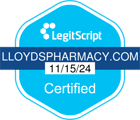Jump to section
Foods rich with Omega 3 fatty acids
Approved by our Clinical team | Nov 9, 2020

A healthy, balanced diet and active lifestyle are some of the ways we can help to look after our health. There’s also staying hydrated and making sure we’re getting all the vitamins we need through the foods we eat and sometimes taking supplements. A varied diet contains plenty of Omega 3s as well as other vitamins. To find out which foods are rich in Omega 3s, read on.
What are Omega 3 fatty acids?
expand_moreOmega 3 fatty acids are nutritious fats that should be eaten as part of a healthy, balanced diet. The best source of Omega 3s is oily fish, however they can also be found in other types of fish, and certain plant foods.
There are three main types of Omega 3:
- ALA – found in plant oils including flaxseed
- EPA – found in fish and other seafood
- DHA - found in fish and other seafood
Our bodies can get the above Omega 3 by converting some ALA into EPA and then DHA. This is in very small amounts so it’s essential that we get Omega 3 from our food.
If you eat in a healthy, balanced way, there’s a good chance you’re already getting all the Omega 3s you need. As a guide, the NHS and Heart UK recommend eating two 140g portions of fish a week, one of which is oily fish. If you’re a vegetarian or vegan, you might need to start eating more seeds, nuts and green leafy vegetables.
If you don’t feel like you’re getting enough Omega 3s in your diet, you can start taking Omega 3 supplements. If you’re vegetarian or vegan you’ll want to take supplements that are derived from algae rather than krill, fish or cod liver oil.
Also remember that supplements aren’t a substitute for a healthy and balanced diet.
What are the benefits of Omega 3s?
expand_moreResearch suggests that Omega 3s have a number of health benefits. It’s thought that they improve blood flow round the body, keep your heart healthy, and lower levels of triglycerides. To learn more about the benefits of Omega 3s, read our Omega 3 benefits article.
Foods with Omega 3s
expand_moreOily fish and seafood
Oily fish and shellfish are two fantastic sources of Omega 3s. They also contain other essential nutrients such as vitamins A, B12 and D, and selenium, iron and zinc.
If you’re happy to eat fish and seafood and you’d like to get more Omega 3s, here’s a list to try:
- Mackerel
- Herring
- Salmon
- Pilchards
- Trout
- Crab
- Mussels
- Oysters
- Squid
- Anchovies
- Eel
- Sardines
- Sprats
- Swordfish
- Whitebait
Remember, the NHS recommends two portions of fish a week, one of which is an oily fish.
Omega 3 meal ideas
We’re always here to help you with inspiration and ideas. If you’re struggling to fit Omega 3 into your diet, check out our Omega 3 rich meal plan below.
- Breakfast – Smoked salmon and cream cheese bagel or chia seed overnight oats with raspberries and almond milk.
- Lunch – Warm mackerel salad with new potatoes and beetroot or margherita pizza with anchovies and side salad.
- Dinner – Crispy tofu with egg noodles and stir fired kale or paella with squid and mussels served with rocket salad.
- Snacks – Mixed seeds or edamame beans with soy sauce or avocado on a slice of seeded toast.
Plant foods
If you don’t eat fish, you can get more Omega 3s into your diet by cooking with the foods listed below. Many of these contain ALA, a type of Omega 3 that the body can convert into EPA and DHA.
Foods rich in Omega 3:
- Flaxseed and flaxseed/linseed oil
- Walnuts and walnut oil
- Pecans and hazelnuts
- Soy beans, soy milk and tofu
- Pumpkin seeds
- Chia seeds
- Hemp seeds
- Green, leafy vegetables
Even if you eat oily fish, introducing more seeds, nuts and green vegetables into your diet is a great way to get essential nutrients.
Fortified foods
Some supermarket foods are enriched with Omega 3s to make them more nutritious. These include cereals, bread, spreads, milk, yoghurt and eggs. Make sure to read the nutritional information to make sure these foods have been fortified with Omega 3.
Other sources of Omega 3
expand_moreThe best way to get Omega 3s is to adapt your diet to include the kinds of food listed above. If you can’t manage this consistently, you may want to consider taking supplements that contain Omega 3s.
Omega 3 supplements
expand_moreOmega 3 supplements are generally thought to be safe to take and there are a variety of supplements available in the UK. We have a variety of oils and capsules that you can take to support your daily vitamin intake.
Omega 3 supplements aren’t recommended for pregnant or breastfeeding women as they contain vitamin A. If you are taking blood thinning medicines speak to your doctor before taking Omega 3 supplements.
Just remember that supplements should never be used as a substitute for a healthy, balanced diet. If you’re unsure what vitamins would be right for you speak to a pharmacist and always read the label.
References
expand_more- www.heartuk.org.uk/low-cholesterol-foods/omega-3-fats
- www.nhs.uk/live-well/eat-well/fish-and-shellfish-nutrition/
- www.bda.uk.com/resource/omega-3.html
- https://ods.od.nih.gov/factsheets/Omega3FattyAcids-Consumer/
- www.shellfish.org.uk/files/Literature/Healthy-Eating/23239Nutritional_benefits_of_shellfish1.pdf
- www.nccih.nih.gov/health/omega3-supplements-in-depth







